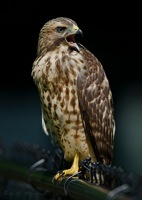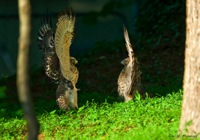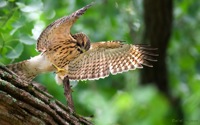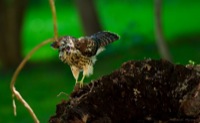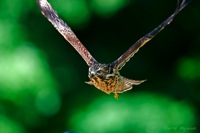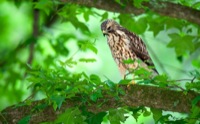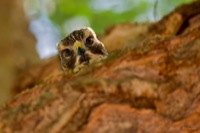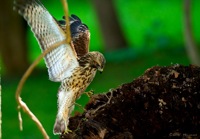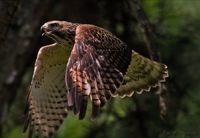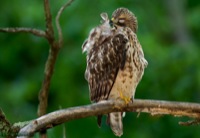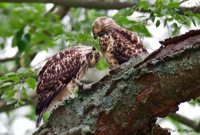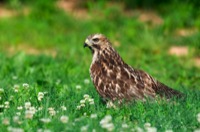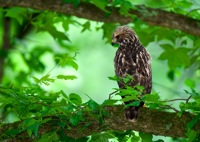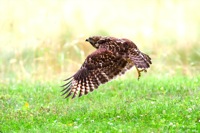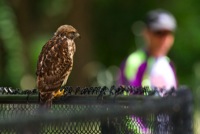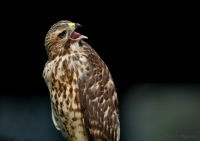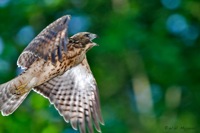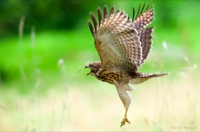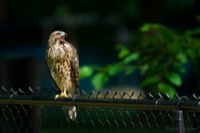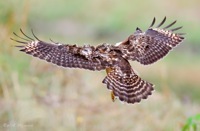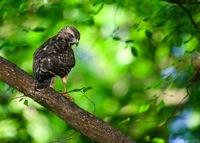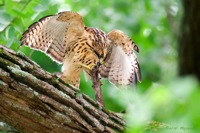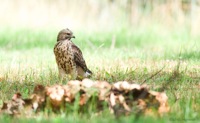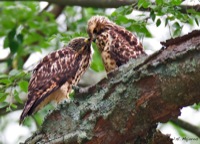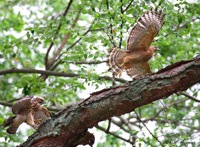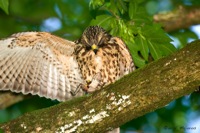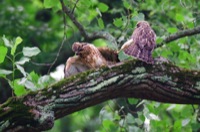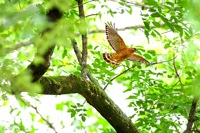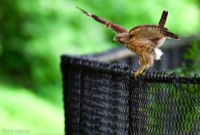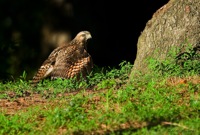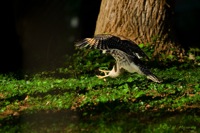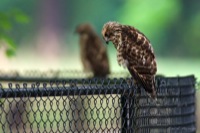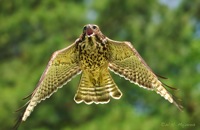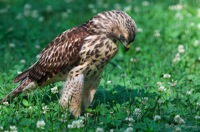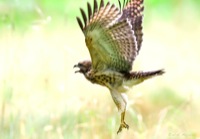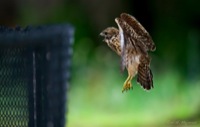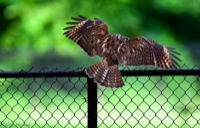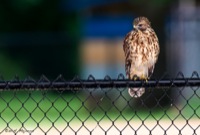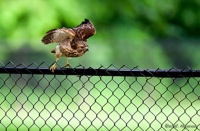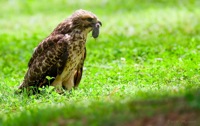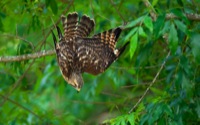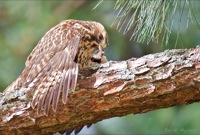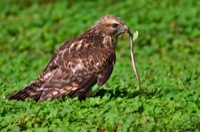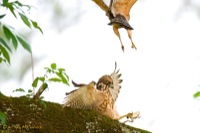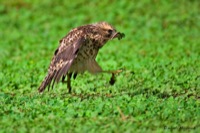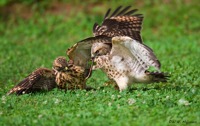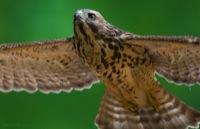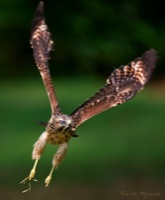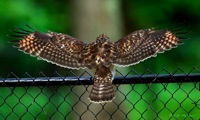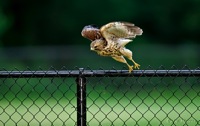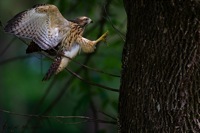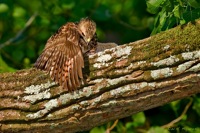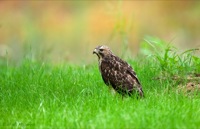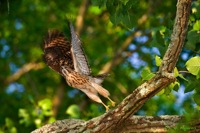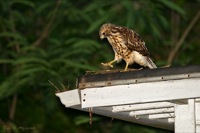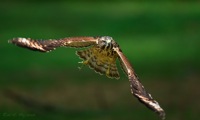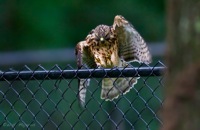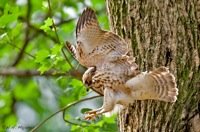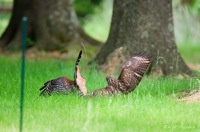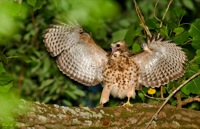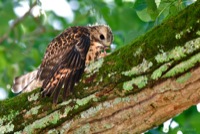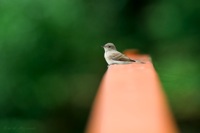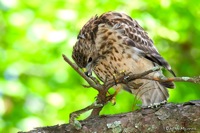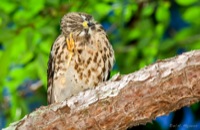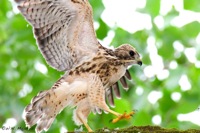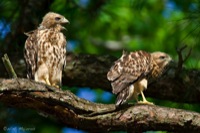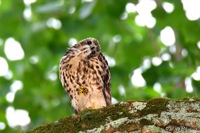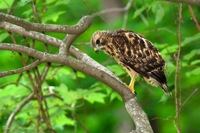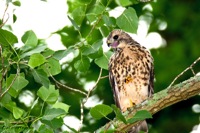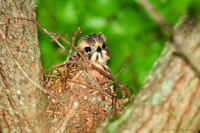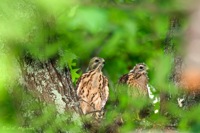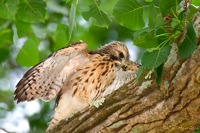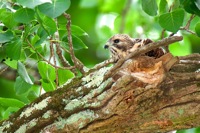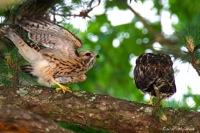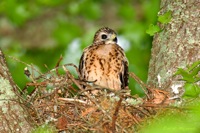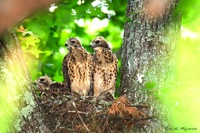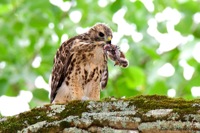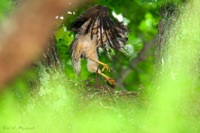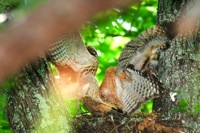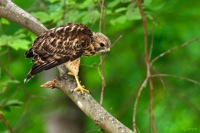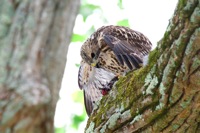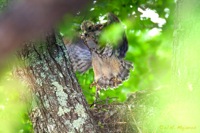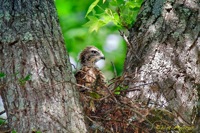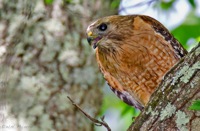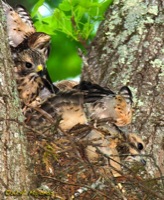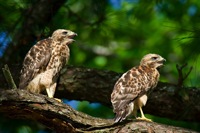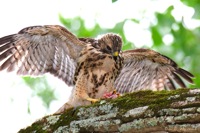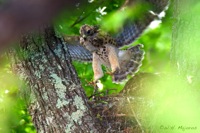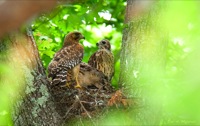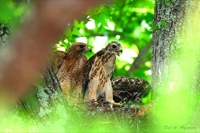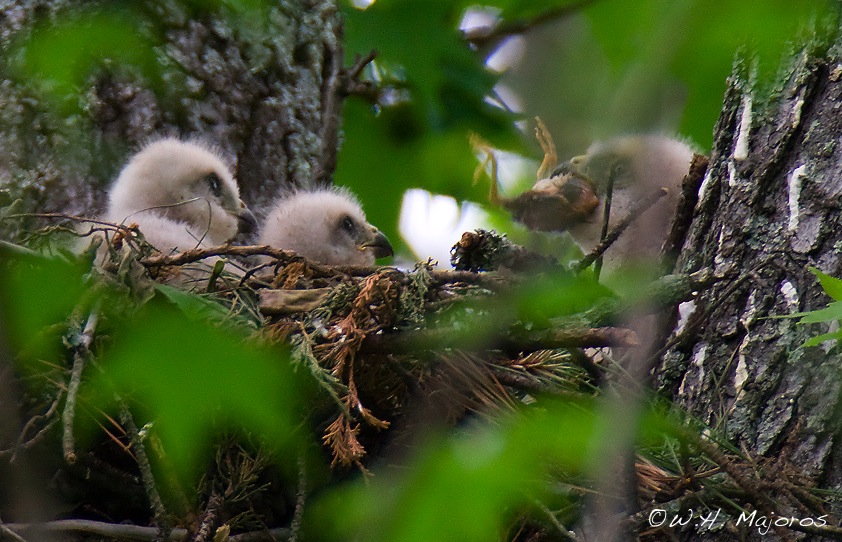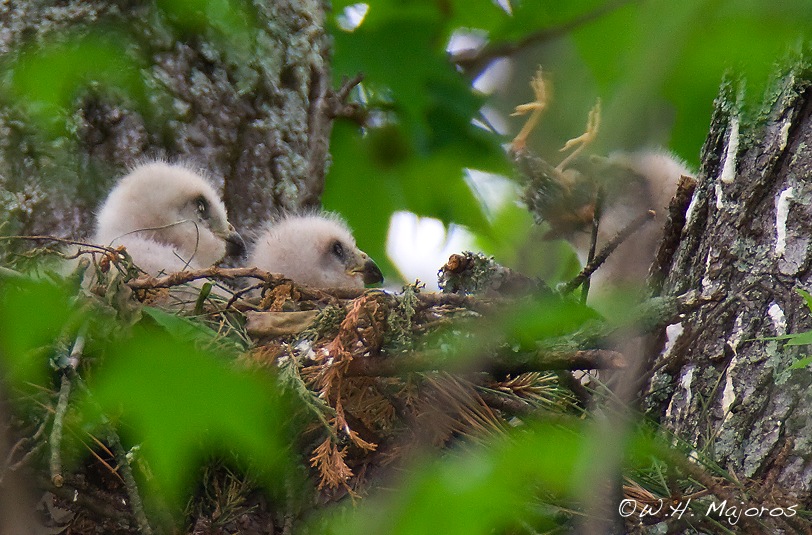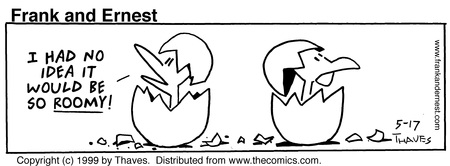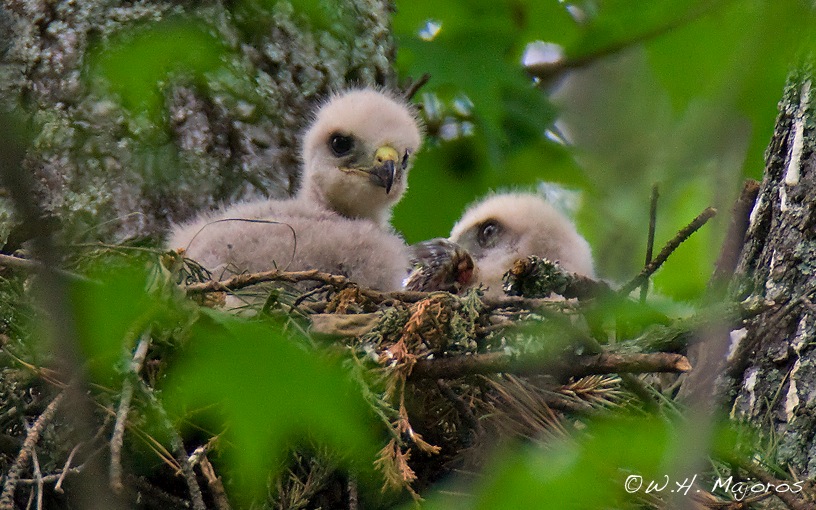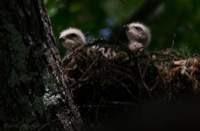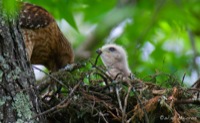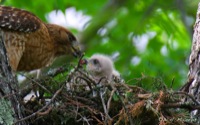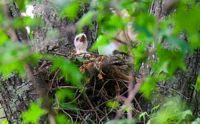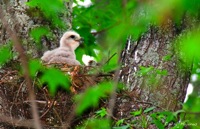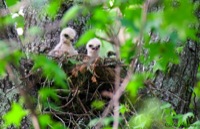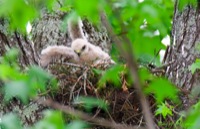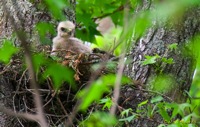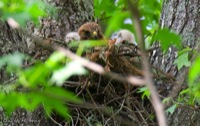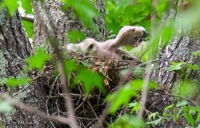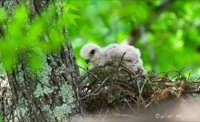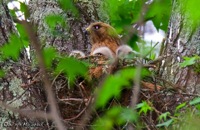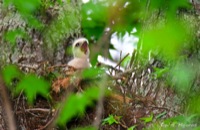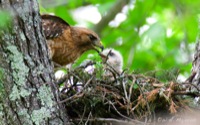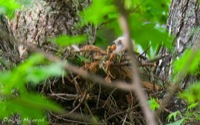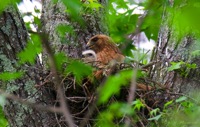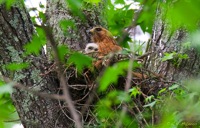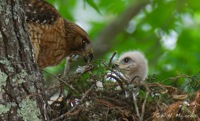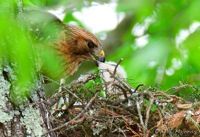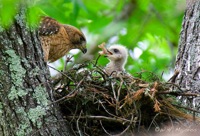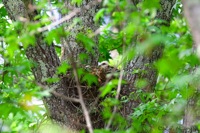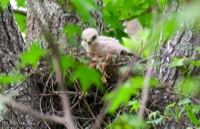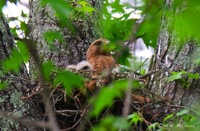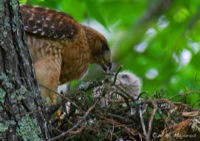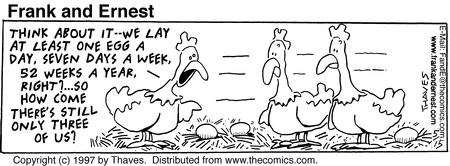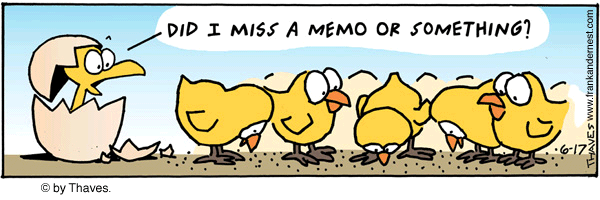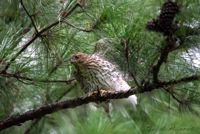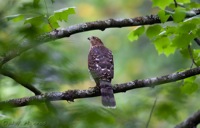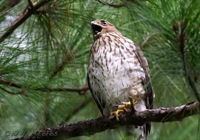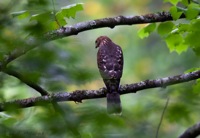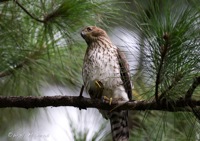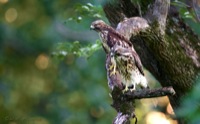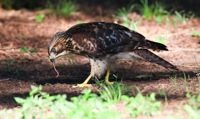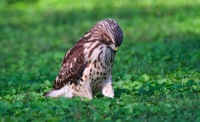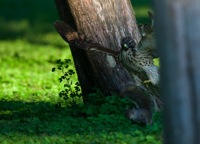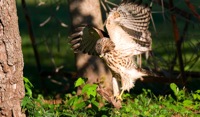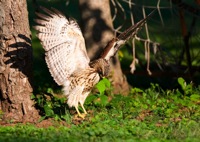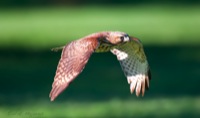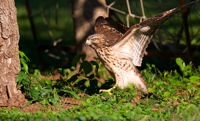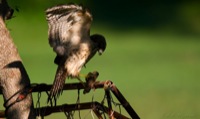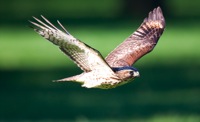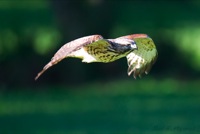Northgate Park, Durham, NC

This page is optimized for

NOTE: images on this page will appear too dark on Windows and Linux machines.
If you're using Windows or Linux, please go to the gamma corrected version of this page by clicking HERE.
INTRODUCTION
| This page documents my ongoing
observations
of a pair of Red-shouldered Hawks (scientific name: Buteo lineatus)
nesting within Northgate Park in northern Durham, NC. This is
only my
second
season observing this nesting pair, though local residents inform me
that the hawks have nested in the park for at least four years.
Hopefully, they'll continue nesting there for many years to come; I
hope to update this page fairly regularly, so in time this page will
become a "biography" of sorts for these particular birds and their
offspring. NOTE: Journal entries are listed in reverse order, so the newer entries will be nearer the top of this page; as you progress down the page you'll be reading progressively older journal entries. |
June 15, 2009
| This past week the juveniles have begun to venture much further from the vicinity of the nest, though much of the time they still gravitate toward either the dog park or the main area of Northgate Park centered around the rusty iron bridge. When hunting at the dog park, they perch either on low branches or on the metal fence, and seem to take little notice of people or cars passing by quite close, as you can see from some of the images below. The adults still bring in food, though that's starting to seem less frequent. During food deliveries the juveniles compete very aggressively for the food, though at other times they seem almost to treat each other with human-like tenderness. Their flying skills are now very good (often better than my flight-photography skills, in fact), and they've been ranging as far as Murray Avenue, to the athletic complex next to the NC Museum of Life & Science. They've also begun spending some time hunting in the "antenna field" owned by the radio station (not shown here). I fear they may soon disperse into areas where I won't be able to follow. |
June 8, 2009
| This past week the juveniles have started to spend much more time hunting for small prey (insects and worms) in the vicinity of the dog park, sometimes even perching on the wire mesh fence encircling the "small dog" enclosure of the dog park (see photos below). The adults continue to provide a significant number of calories to their diet, however: the photo below of the juvenile swallowing a rodent shows a prey item that had been delivered by an adult and then accidentally dropped by the juvenile from its perch, requiring retrieval on the ground. The adults have also been bringing in turtles (see photo) as well as a large number of small, earthworm-like snakes (see photos). The juveniles have continued to improve their flying skills, with their takeoffs and landings appearing much more confident. |
June 1, 2009
| Over the past few days the juveniles have become increasingly more active, exploring the small area around the nest tree, with one or two of the birds venturing almost as far as the dog park, and at least one of the birds coming down to the ground for the first time. One has started perching on the tiny sewer maintenance building near the dog park (see photo below). A few of the images below show examples of agonistic behavior (dominance), particularly regarding possession of a carcass provided by the adults. Notice that one of the birds likes to sit down on the branch like a duck, rather than standing erect on its legs like the others. A few examples of "play" behavior are shown too (biting a branch or attacking a knot of wood with the feet). Another juvenile bird is shown too: a young Phoebe (a type of flycatcher) perched on the rusty iron bridge that spans Ellerbe Creek . Click any image below to zoom to full size. |
(click
to zoom)
May 28, 2009
| Over the past week or so I've been observing several of the juveniles out of the nest. Over Labor Day weekend there were two juveniles still in the nest and two which had fledged (a total of FOUR chicks this year!), though the fledglings often returned to the nest briefly during food deliveries by the adults. Today for the first time I saw all four of the juveniles out of the nest, so the remaining two birds must have fledged yesterday or early this morning. The photos below illustrate several behaviors of fledglings, including (1) mantling of food (spreading the wings around a carcass to keep other birds from stealing it), (2) exercising the wings in the nest and practicing flying across the nest, (3) assaulting the adult when s/he arrives at the nest with food, (4) frequent calling while in the nest, presumably to tell the parents that they're hungry, and (5) difficulty balancing when perched outside of the nest soon after fledging. |
May 8, 2009
| Over the past two days I struggled to find time in my busy schedule (yes, I have a day job too...) to stop by Northgate Park and check on the status of the new nest. My efforts paid off: the chicks (there are at least three) have now hatched and are already large enough to be visible over the rim of the nest, even from the ground. In the three photos below, you can see that the chicks are being well-fed: the chick to the right is attempting to swallow a songbird chick whole (!), which one of the adults delivered to the nest. All of these photos were taken from the ground using a 1200mm lens (600mm + 2x TC) at a very considerable distance, so the amount of detail present is actually a bit surprising. (Despite what the photos may suggest, I was not standing atop a ladder two feet from the nest!). |
